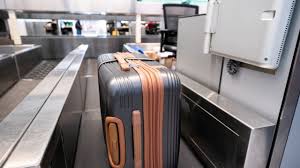
Breaking News
 Palantir's "Gotham" A.I. SURVEILLANCE SYSTEM And Peter Thiel's 4-Part Series ON TH
Palantir's "Gotham" A.I. SURVEILLANCE SYSTEM And Peter Thiel's 4-Part Series ON TH
 The Big List Of 18 Things That Are Going To Happen Within The Next 40 Days
The Big List Of 18 Things That Are Going To Happen Within The Next 40 Days
 'House of Cards' Star Robin Wright is Latest Celeb Fleeing to Europe
'House of Cards' Star Robin Wright is Latest Celeb Fleeing to Europe
 Your clothes hold a frequency.
Your clothes hold a frequency.
Top Tech News
 Neuroscientists just found a hidden protein switch in your brain that reverses aging and memory loss
Neuroscientists just found a hidden protein switch in your brain that reverses aging and memory loss
 NVIDIA just announced the T5000 robot brain microprocessor that can power TERMINATORS
NVIDIA just announced the T5000 robot brain microprocessor that can power TERMINATORS
 Two-story family home was 3D-printed in just 18 hours
Two-story family home was 3D-printed in just 18 hours
 This Hypersonic Space Plane Will Fly From London to N.Y.C. in an Hour
This Hypersonic Space Plane Will Fly From London to N.Y.C. in an Hour
 Magnetic Fields Reshape the Movement of Sound Waves in a Stunning Discovery
Magnetic Fields Reshape the Movement of Sound Waves in a Stunning Discovery
 There are studies that have shown that there is a peptide that can completely regenerate nerves
There are studies that have shown that there is a peptide that can completely regenerate nerves
 Swedish startup unveils Starlink alternative - that Musk can't switch off
Swedish startup unveils Starlink alternative - that Musk can't switch off
 Video Games At 30,000 Feet? Starlink's Airline Rollout Is Making It Reality
Video Games At 30,000 Feet? Starlink's Airline Rollout Is Making It Reality
 Grok 4 Vending Machine Win, Stealth Grok 4 coding Leading to Possible AGI with Grok 5
Grok 4 Vending Machine Win, Stealth Grok 4 coding Leading to Possible AGI with Grok 5
What really happens to your bag after you check it in?

In the 1999 animated film, Toy Story 2, Buzz Lightyear and his fellow sentient playthings enter an airport's 'back-of-the-house' to rescue Sheriff Woody Pride from a suitcase. Together the toys encounter a world of diverging conveyor belts, inclines and declines, and seemingly endless turns, all designed to carry checked baggage from an airline ticket counter or curbside kiosk to its intended flights.
According to Michael Rangole, maintenance manager for Vanderlande Industries—the company that maintains and operates the baggage handling system at California's San José Mineta International Airport (SJC)—Toy Story 2 is incredibly accurate.
"San Jose's system alone has over 120 curves," says Rangole.
Beyond what's conveyed in Toy Story 2, what exactly happens to your luggage from the time it is tagged to the moment it's placed into the plane's cargo hold? The answer may surprise you.
From ticket counter to conveyor: a checked bag's first step
"It all starts with what's known as 'bag hygiene,'" says Simran Sandhar, SJC's terminal and customer experience superintendent. The term refers to everything from stowing luggage handles to keeping oddly shaped items, like fishing rods and bowling balls, off the belt (these are brought to an oversized baggage counter after tagging).
"If luggage doesn't go onto the belt properly," says Sandhar, "it will encounter some hiccups and delays in the baggage make-up area," which is the behind-the-scenes zone where luggage is sorted before being loaded onto departing planes. "Good bag hygiene allows a bag to get where it's supposed to go with minimal issues."
When you drop off a piece of luggage at an airline check-in counter, an agent weighs your bag and threads an airline-issued baggage tag through its handle, sealing both sides of the tag together with a sticky adhesive. Each tag includes the airline code and unique baggage ID number, a three-letter code for your destination airport, and a barcode that stores your flight number, destination, and passenger info.
There's also what's known as a "bingo tag," says Sandhar, "that little barcode sticker that an agent will rip off from your baggage tag and stick directly on your luggage. It's used as backup, just in case the main tag falls off."

 HERE COMES THE MOTHERSHIP
HERE COMES THE MOTHERSHIP

